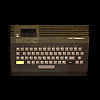
Video Graphics Array (VGA) is a video display controller and accompanying de facto graphics standard, first introduced with the IBM PS/2 line of computers in 1987, which became ubiquitous in the IBM PC compatible industry within three years. The term can now refer to the computer display standard, the 15-pin D-subminiature VGA connector, or the 640 × 480 resolution characteristic of the VGA hardware.

The Enhanced Graphics Adapter (EGA) is an IBM PC graphics adapter and de facto computer display standard from 1984 that superseded the CGA standard introduced with the original IBM PC, and was itself superseded by the VGA standard in 1987. In addition to the original EGA card manufactured by IBM, many compatible third-party cards were manufactured, and EGA graphics modes continued to be supported by VGA and later standards.

The Apple IIGS is a 16-bit personal computer produced by Apple Computer. It is the fifth and most powerful of the Apple II family. It is compatible with earlier Apple II models but has a Macintosh look and feel, and resolution and color similar to the Amiga and Atari ST. The "GS" in the name stands for "Graphics and Sound", referring to its enhanced multimedia hardware, especially its state-of-the-art audio.

The SAM Coupé is an 8-bit British home computer manufactured by Miles Gordon Technology (MGT), based in Swansea in the United Kingdom and released in December 1989.

The Color Graphics Adapter (CGA), originally also called the Color/Graphics Adapter or IBM Color/Graphics Monitor Adapter, introduced in 1981, was IBM's first color graphics card for the IBM PC and established a de facto computer display standard.

The Thomson EF936x series is a type of Graphic Display Processor (GDP) by Thomson-EFCIS. The chip could draw at 1 million pixels per second, which was relatively advanced for the time of its release.

The Plantronics Colorplus is a graphics card for IBM PC computers, first sold in 1982. It implements a superset of the then-current CGA standard, using the same monitor standard and providing the same pixel resolutions. It was produced by Frederick Electronics, a subsidiary of Plantronics since 1968, and sold by Plantronics' Enhanced Graphics Products division.

The ATM Turbo, also known simply as ATM is a ZX Spectrum clone, developed in Moscow in 1991, by two firms, MicroArt and ATM.
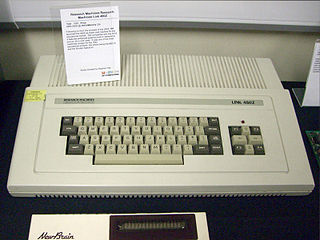
The LINK 480Z was an 8-bit microcomputer produced by Research Machines Limited in Oxford, England, during the early 1980s.

The Thomson TO7, also called Thomson 9000 is a home computer introduced by Thomson SA in November 1982, with an original retail price of 3750 FF. By 1983 over 40000 units were produced. About 84 games were released for the TO7.

The ThomsonMO6 was a Motorola 6809E-based computer introduced in France in 1986. It was intended as the successor to the Thomson MO5 and featured 128 KB of RAM, a 40 × 25 text display, and a new built-in Microsoft BASIC interpreter. It retained compatibility with its predecessor, while incorporating the same technology as the TO8.
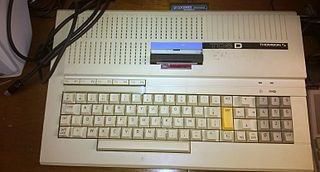
The Thomson TO8 is a home computer introduced by French company Thomson SA in 1986, with a cost of 2,990 FF. It replaces its predecessor, the Thomson TO7/70, while remaining essentially compatible.

Tandy Graphics Adapter is a computer display standard for the Tandy 1000 series of IBM PC compatibles, which has compatibility with the video subsystem of the IBM PCjr but became a standard in its own right.

In the 1980s the French Thomson company produced a range of 8-bit computers based on the 6809E CPU.
BASIC 1.0 is the standard BASIC language for Thomson computers, which is the reference for the entire range. This is an implementation of Microsoft BASIC (BASIC-69). It was used to introduce children from France to programming in the 1980s. Three languages were mainly taught: LSE, BASIC and LOGO. School textbooks programs were given in BASIC 1.0 for Thomson and sometimes in ExelBasic for the Exelvision EXL 100.
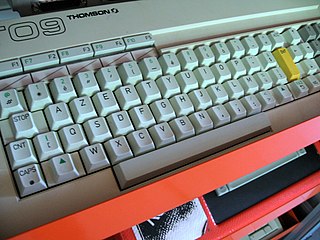
The Thomson TO9 is a home computer introduced by French company Thomson SA in 1985.
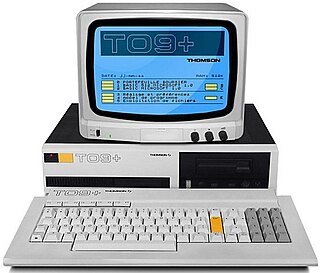
The Thomson TO9+ is a home computer introduced by French company Thomson SA in 1986. It kept the professional look of the Thomson TO9 by using a separate keyboard.


















